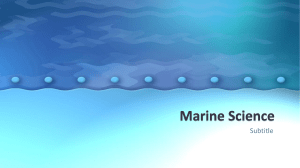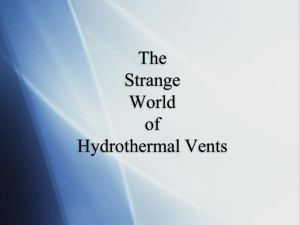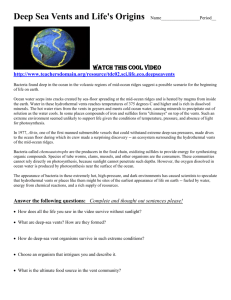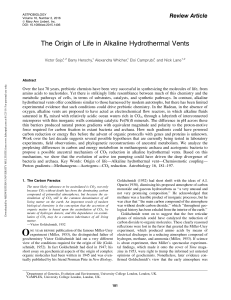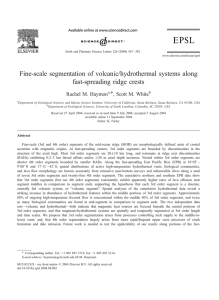Lesson 4, Activity 2 Origin of Life Reflection Group 1
advertisement
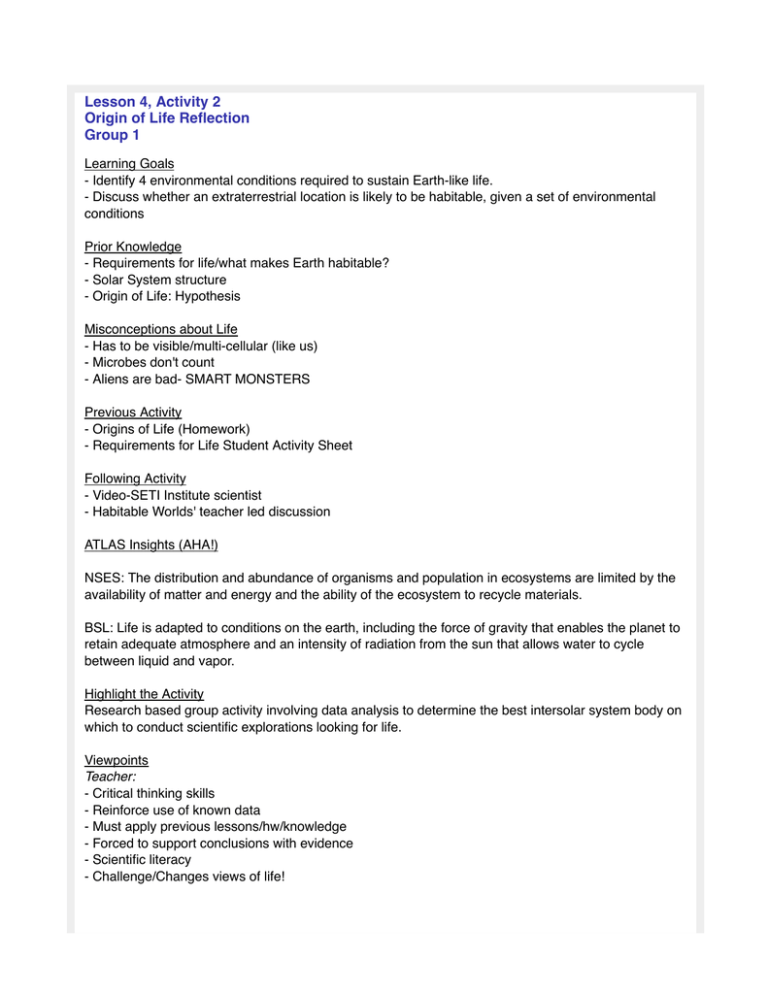
Lesson 4, Activity 2 Origin of Life Reflection Group 1 Learning Goals - Identify 4 environmental conditions required to sustain Earth-like life. - Discuss whether an extraterrestrial location is likely to be habitable, given a set of environmental conditions Prior Knowledge - Requirements for life/what makes Earth habitable? - Solar System structure - Origin of Life: Hypothesis Misconceptions about Life - Has to be visible/multi-cellular (like us) - Microbes don't count - Aliens are bad- SMART MONSTERS Previous Activity - Origins of Life (Homework) - Requirements for Life Student Activity Sheet Following Activity - Video-SETI Institute scientist - Habitable Worlds' teacher led discussion ATLAS Insights (AHA!) NSES: The distribution and abundance of organisms and population in ecosystems are limited by the availability of matter and energy and the ability of the ecosystem to recycle materials. BSL: Life is adapted to conditions on the earth, including the force of gravity that enables the planet to retain adequate atmosphere and an intensity of radiation from the sun that allows water to cycle between liquid and vapor. Highlight the Activity Research based group activity involving data analysis to determine the best intersolar system body on which to conduct scientific explorations looking for life. Viewpoints Teacher: - Critical thinking skills - Reinforce use of known data - Must apply previous lessons/hw/knowledge - Forced to support conclusions with evidence - Scientific literacy - Challenge/Changes views of life! Student: - Loved fact sheets/database - Captivating info - Group activity - Cool topic - Relevant to "Real World" science missions - Using technology Homework for Lesson 4-2 Origin of Life: Hypothesis Hypothesis: Life first began in hydrothermal vents in the ocean floor Evidence: - Hydrothermal vents today support a rich ecosystem - Vents are a source of nutrients and energy - Fossil records show that the oldest organisms were thermopiles Hypothesis: Life originally came from elsewhere in the solar system or galaxy Evidence: Meteorites contain organic molecules such as amino acids and other biogenic compounds What information about early life on Earth do most scientists agree on? - We can infer evidence from data in the fossil record - Oldest organisms were thermopiles - Meteorites have impacted Earth many times - We still don't know exactly where life came from (Read Student Reader: "Life's First Scalding Steps") 1. Before 1977, where did most scientists believe that life on Earth began? On the surface of water, exposed to sunlight. 2. What did oceanographer Jack Corliss discover in 1977? Hydrothermal vents on the Pacific Ocean floor; 6 ft. long tube worms; thousands strange microbes, large clams 3. How did his big discovery change thinking of where life started on Earth? Life could have started in hydrothermal vents. 4. Describe the experiment by J.A. Brandes at Carnegie Institute that tested Corliss' hypothesis. - Put water and crushed rock into a gold capsule - Added "volcanic" gases - Sealed capsule—high T and P like hydrothermal vents - Trying to see if chemical reactions necessary for early life can happen in conditions like those in HT vents


